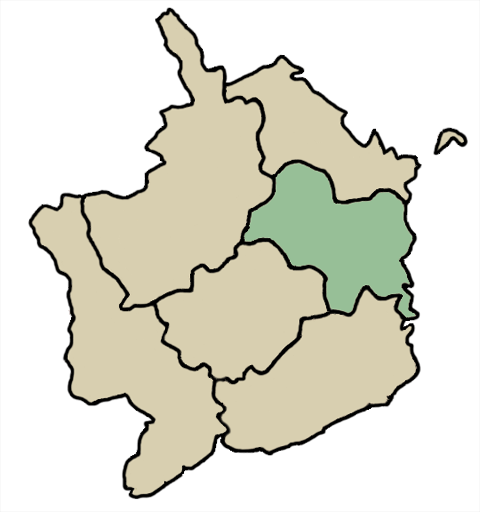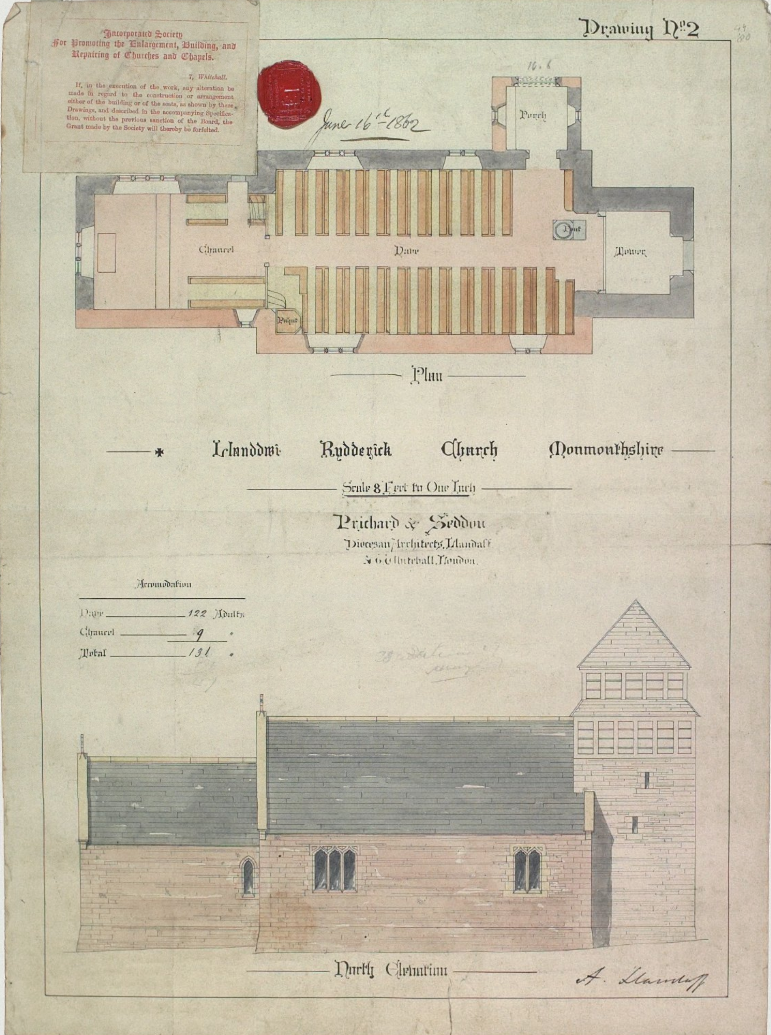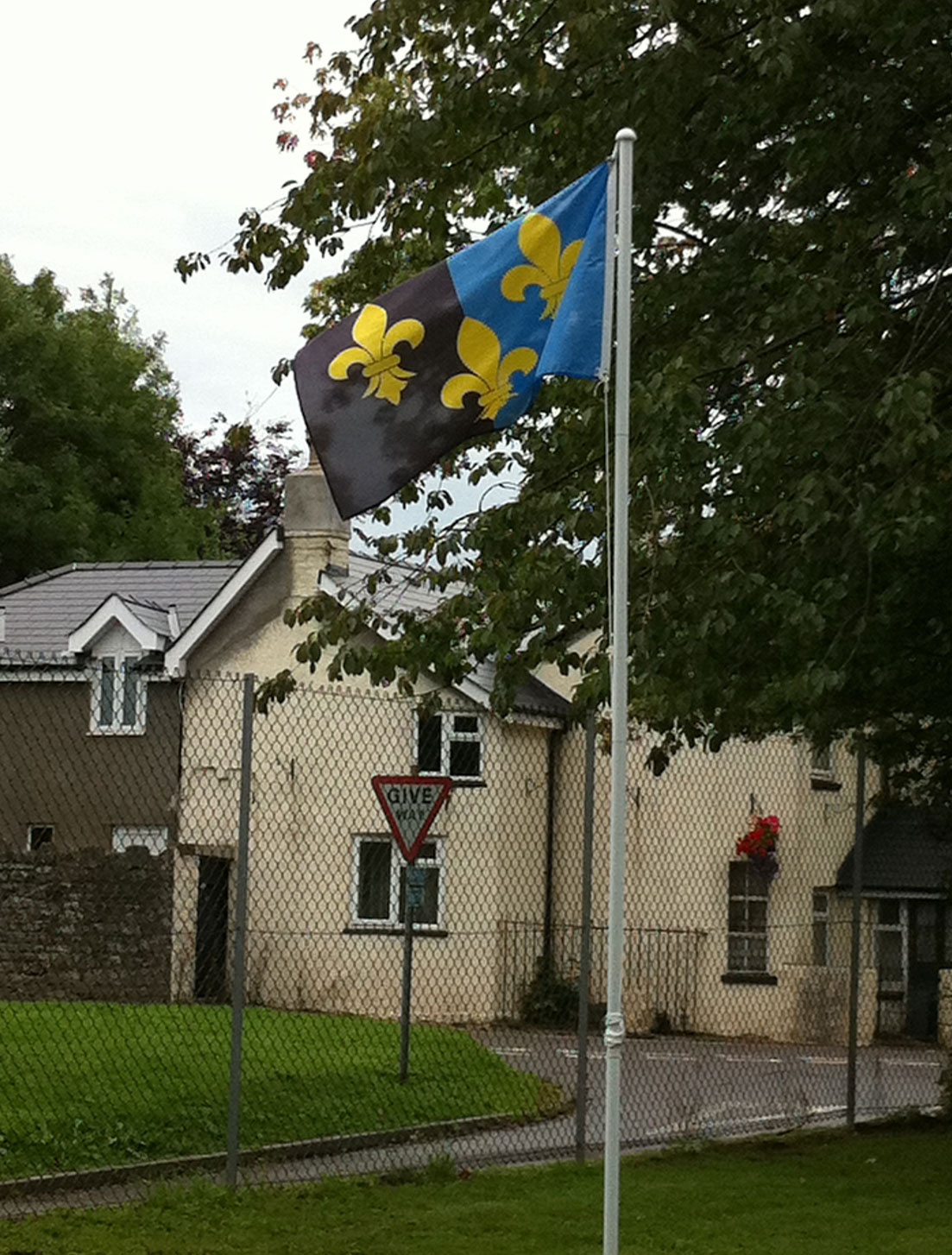|
Kilgwrrwg
Kilgwrrwg ( cy, Cilgwrrwg) is a rural parish in Monmouthshire, south east Wales, United Kingdom. It is located north west of Chepstow and south east of Usk in a network of country lanes running through the rolling hills below the Trellech ridge. History The Welsh placename element ''cil'' means a corner, or retreat, usually in a religious context, and the settlement name is suggestive of its Celtic Christian origins. In 1811 the parish had a population of 133, and in 1831 it had a population of 113 and 26 houses. Historically the parish was part of the Hundred of Raglan and was endowed by the Diocese of Llandaff. In the 1980s and early 1990s, Kilgwrrwg was home to American war correspondent and novelist Martha Gellhorn, the widow of Ernest Hemingway. Church of the Holy Cross The Church of the Holy Cross at Kilgwrrwg is one of the most remote parish churches in the UK still in regular use. It can only be reached by crossing two fields and a stream from the nearest house. ... [...More Info...] [...Related Items...] OR: [Wikipedia] [Google] [Baidu] |
Martha Gellhorn
Martha Ellis Gellhorn (8 November 1908 – 15 February 1998) was an American novelist, travel writer, and journalist who is considered one of the great war correspondents of the 20th century. Gellhorn reported on virtually every major world conflict that took place during her 60-year career. She was also the third wife of American novelist Ernest Hemingway, from 1940 to 1945. She died in 1998 by apparent suicide at the age of 89, ill and almost completely blind. The Martha Gellhorn Prize for Journalism is named after her. Early life Gellhorn was born on 8 November 1908, in St. Louis, Missouri, the daughter of Edna Fischel Gellhorn, a suffragist, and George Gellhorn, a German-born gynecologist. Her father and maternal grandfather were Jewish, and her maternal grandmother came from a Protestant family. Her brother Walter became a noted law professor at Columbia University, and her younger brother Alfred was an oncologist and dean of the University of Pennsylvania School ... [...More Info...] [...Related Items...] OR: [Wikipedia] [Google] [Baidu] |
Hundred Of Raglan
Raglan (also known as Ragland and Rhaglan) was an ancient hundred of Monmouthshire. It contained the following ancient parishes: * Betws Newydd * Bryngwn *Chapel Hill * Cilgwrwg * Cwmcarfan *Devauden *Llandenny * Llandevenny hamlet *Llandogo Llandogo ( cy, Llaneuddogwy) is a small village in Monmouthshire, south Wales, between Monmouth and Chepstow in the lower reaches of the Wye Valley AONB, two miles north of Tintern. It is set on a steep hillside overlooking the River Wye and a ... *Llangoven *Llanishen, Monmouthshire, Llanishen *Llanfihangel Tor-y-Mynydd, Llanvihangel Tor y Mynydd *Llansoy, Llansoe *Llanvihangel-Ystern-Llewern *Mitchel Troy, Mitchell Troy *Pen Rhos township *Pen y Clawdd *Penallt, Penalt *Raglan, Monmouthshire, Raglan *Tregare *Trelleck Grange *Trellech, Tryleg *Wolvesnewton It is now administered by the Principal areas of Wales, local authority of Monmouthshire. References {{Monmouthshire hundreds ... [...More Info...] [...Related Items...] OR: [Wikipedia] [Google] [Baidu] |
Monmouthshire
Monmouthshire ( cy, Sir Fynwy) is a county in the south-east of Wales. The name derives from the historic county of the same name; the modern county covers the eastern three-fifths of the historic county. The largest town is Abergavenny, with other towns and large villages being: Caldicot, Chepstow, Monmouth, Magor and Usk. It borders Torfaen, Newport and Blaenau Gwent to the west; Herefordshire and Gloucestershire to the east; and Powys to the north. Historic county The historic county of Monmouthshire was formed from the Welsh Marches by the Laws in Wales Act 1535 bordering Gloucestershire to the east, Herefordshire to the northeast, Brecknockshire to the north, and Glamorgan to the west. The Laws in Wales Act 1542 enumerated the counties of Wales and omitted Monmouthshire, implying that the county was no longer to be treated as part of Wales. However, for all purposes Wales had become part of the Kingdom of England, and the difference had little practical effec ... [...More Info...] [...Related Items...] OR: [Wikipedia] [Google] [Baidu] |
Celtic Church
Celtic Christianity ( kw, Kristoneth; cy, Cristnogaeth; gd, Crìosdaidheachd; gv, Credjue Creestee/Creestiaght; ga, Críostaíocht/Críostúlacht; br, Kristeniezh; gl, Cristianismo celta) is a form of Christianity that was common, or held to be common, across the Celtic-speaking world during the Early Middle Ages. Some writers have described a distinct Celtic Church uniting the Celtic peoples and distinguishing them from adherents of the Roman Church, while others classify Celtic Christianity as a set of distinctive practices occurring in those areas. Varying scholars reject the former notion, but note that there were certain traditions and practices present in both the Irish and British churches that were not seen in the wider Christian world. Such practices include: a distinctive system for determining the dating of Easter, a style of monastic tonsure, a unique system of penance, and the popularity of going into "exile for Christ". Additionally, there were other pra ... [...More Info...] [...Related Items...] OR: [Wikipedia] [Google] [Baidu] |
Grade II* Listed Building
In the United Kingdom, a listed building or listed structure is one that has been placed on one of the four statutory lists maintained by Historic England in England, Historic Environment Scotland in Scotland, in Wales, and the Northern Ireland Environment Agency in Northern Ireland. The term has also been used in the Republic of Ireland, where buildings are protected under the Planning and Development Act 2000. The statutory term in Ireland is " protected structure". A listed building may not be demolished, extended, or altered without special permission from the local planning authority, which typically consults the relevant central government agency, particularly for significant alterations to the more notable listed buildings. In England and Wales, a national amenity society must be notified of any work to a listed building which involves any element of demolition. Exemption from secular listed building control is provided for some buildings in current use for worshi ... [...More Info...] [...Related Items...] OR: [Wikipedia] [Google] [Baidu] |
Bellcote
A bellcote, bell-cote or bell-cot is a small framework and shelter for one or more bells. Bellcotes are most common in church architecture but are also seen on institutions such as schools. The bellcote may be carried on brackets projecting from a wall or built on the roof of chapels or churches that have no towers. The bellcote often holds the Sanctus bell that is rung at the consecration of the Eucharist The Eucharist (; from Greek , , ), also known as Holy Communion and the Lord's Supper, is a Christian rite that is considered a sacrament in most churches, and as an ordinance in others. According to the New Testament, the rite was institu .... The bellcote is mentioned throughout history books when referring to older structures and communities. ''Bromsgrove church: its history and antiquities'' is one example which goes into depth about the construction and maintenance of the bellcoteBellcotes are also discussed in The Wiltshire Archæological and Natural History Ma ... [...More Info...] [...Related Items...] OR: [Wikipedia] [Google] [Baidu] |
John Prichard
John Prichard (6 May 1817 – 13 October 1886) was a Welsh architect in the neo-Gothic style. As diocesan architect of Llandaff, he was involved in the building or restoration of many churches in south Wales. Personal history John Prichard was born in Llangan, near Cowbridge, Wales on 6 May 1817, the twelfth son of the rector Richard Prichard, who served as vicar-choral of Llandaff for 35 years. He was descended from the Prichard family of Collenna. John Prichard trained as an architect under Thomas Larkins Walker, and as a result was deeply influenced by the ideas of Augustus Pugin; much of his work was in a neo-Gothic style. He established a practice in Llandaff, Cardiff, becoming 'Resident Diocesan Architect' in December 1844. Between 1852 and 1863 he was in partnership with John Pollard Seddon. Many of his major commissions were restoration works, most famously for Llandaff Cathedral (1843–69); Prichard and Seddon worked on the cathedral from the 1840s until 1869, wh ... [...More Info...] [...Related Items...] OR: [Wikipedia] [Google] [Baidu] |
Victorian Restoration
The Victorian restoration was the widespread and extensive refurbishment and rebuilding of Church of England churches and cathedrals that took place in England and Wales during the 19th-century reign of Queen Victoria. It was not the same process as is understood today by the term building restoration. Against a background of poorly maintained church buildings, a reaction against the Puritan ethic manifested in the Gothic Revival, and a shortage of churches where they were needed in cities, the Cambridge Camden Society and the Oxford Movement advocated a return to a more medieval attitude to churchgoing. The change was embraced by the Church of England which saw it as a means of reversing the decline in church attendance. The principle was to "restore" a church to how it might have looked during the " Decorated" style of architecture which existed between 1260 and 1360, and many famous architects such as George Gilbert Scott and Ewan Christian enthusiastically accepted co ... [...More Info...] [...Related Items...] OR: [Wikipedia] [Google] [Baidu] |
Devauden
Devauden ( cy, Y Dyfawden) is a village and community in Monmouthshire, southeast Wales. It is located between Chepstow and Monmouth near the top of the Trellech ridge on the B4293 road. The community covers an area of . The community includes the villages of Itton and Wolvesnewton, Llanfihangel-tor-y-mynydd and Newchurch. History There is evidence that an ancient ridgeway between Monmouth and the coast at Mathern passed through Devauden. Roman coins from the period of Antoninus Pius were found in the village in 1840. Devauden was said in the ''Anglo-Saxon Chronicle'' to have been the place where the Britons were overwhelmed and defeated by the combined forces of the Anglo-Saxon monarchs, Æthelbald of Mercia and Cuthred of Wessex, in 743. The name may be derived from the Welsh ''Ty'r ffawydden'', or "house of the beech tree". Until the mid-20th century the village was often known as ''The'' Devauden. Devauden and the nearby hamlet of Fedw or Veddw (from Welsh ''Y fedw ... [...More Info...] [...Related Items...] OR: [Wikipedia] [Google] [Baidu] |
Nave
The nave () is the central part of a church, stretching from the (normally western) main entrance or rear wall, to the transepts, or in a church without transepts, to the chancel. When a church contains side aisles, as in a basilica-type building, the strict definition of the term "nave" is restricted to the central aisle. In a broader, more colloquial sense, the nave includes all areas available for the lay worshippers, including the side-aisles and transepts.Cram, Ralph Adams Nave The Catholic Encyclopedia. Vol. 10. New York: Robert Appleton Company, 1911. Accessed 13 July 2018 Either way, the nave is distinct from the area reserved for the choir and clergy. Description The nave extends from the entry—which may have a separate vestibule (the narthex)—to the chancel and may be flanked by lower side-aisles separated from the nave by an arcade. If the aisles are high and of a width comparable to the central nave, the structure is sometimes said to have three nav ... [...More Info...] [...Related Items...] OR: [Wikipedia] [Google] [Baidu] |
English Gothic Architecture
English Gothic is an architectural style that flourished from the late 12th until the mid-17th century. The style was most prominently used in the construction of cathedrals and churches. Gothic architecture's defining features are pointed arches, rib vaults, buttresses, and extensive use of stained glass. Combined, these features allowed the creation of buildings of unprecedented height and grandeur, filled with light from large stained glass windows. Important examples include Westminster Abbey, Canterbury Cathedral and Salisbury Cathedral. The Gothic style endured in England much longer than in Continental Europe. The Gothic style was introduced from France, where the various elements had first been used together within a single building at the choir of the Abbey of Saint-Denis north of Paris, completed in 1144. The earliest large-scale applications of Gothic architecture in England were Canterbury Cathedral and Westminster Abbey. Many features of Gothic architecture ... [...More Info...] [...Related Items...] OR: [Wikipedia] [Google] [Baidu] |
Old Red Sandstone
The Old Red Sandstone is an assemblage of rocks in the North Atlantic region largely of Devonian age. It extends in the east across Great Britain, Ireland and Norway, and in the west along the northeastern seaboard of North America. It also extends northwards into Greenland and Svalbard. These areas were a part of the ancient continent of Euramerica/Laurussia. In Britain it is a lithostratigraphic unit (a sequence of rock strata) to which stratigraphers accord supergroup status and which is of considerable importance to early paleontology. For convenience the short version of the term, ORS is often used in literature on the subject. The term was coined to distinguish the sequence from the younger New Red Sandstone which also occurs widely throughout Britain. Sedimentology The Old Red Sandstone describes a suite of sedimentary rocks deposited in a variety of environments during the Devonian but extending back into the late Silurian and on into the earliest part of the Car ... [...More Info...] [...Related Items...] OR: [Wikipedia] [Google] [Baidu] |










